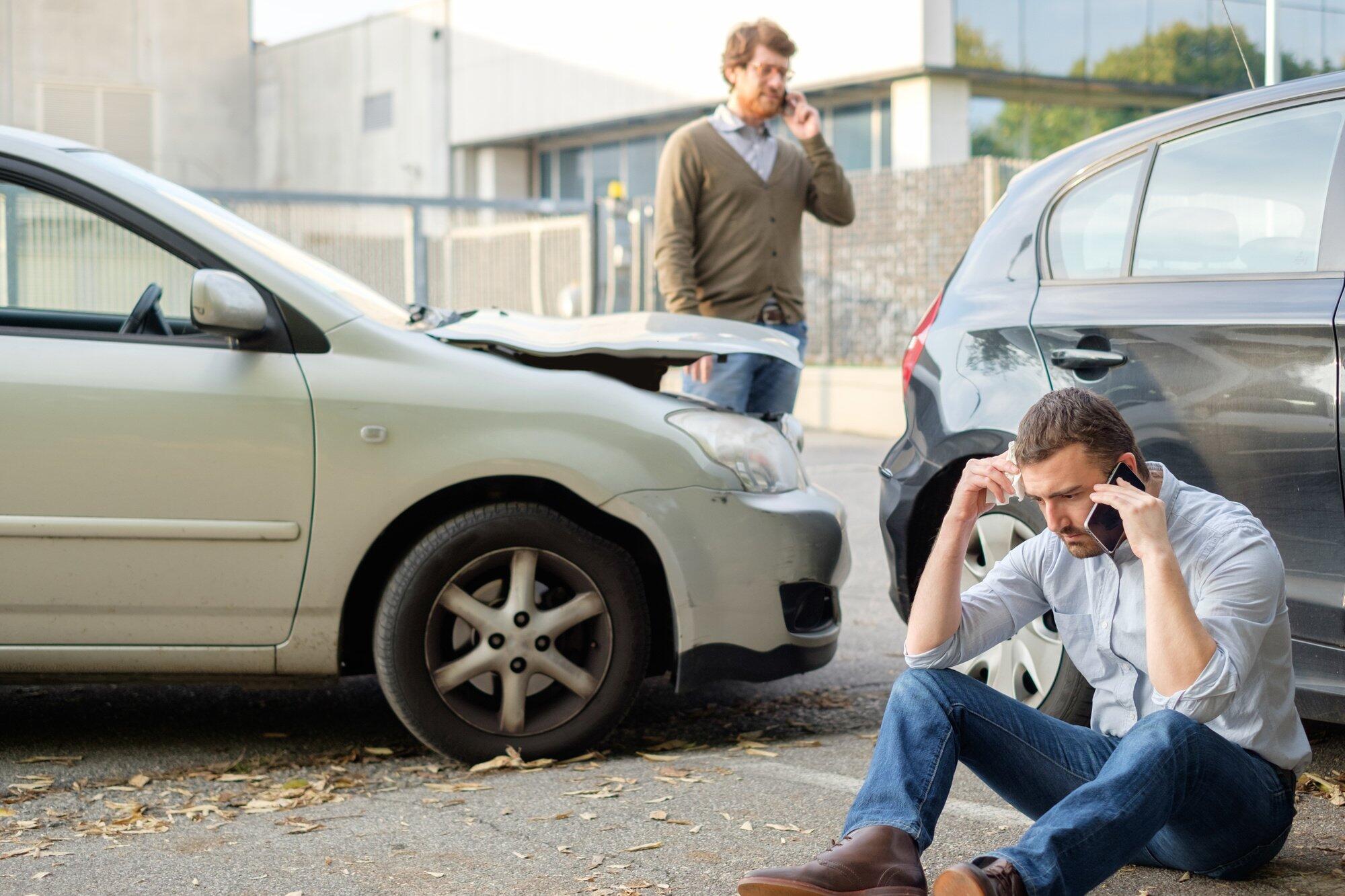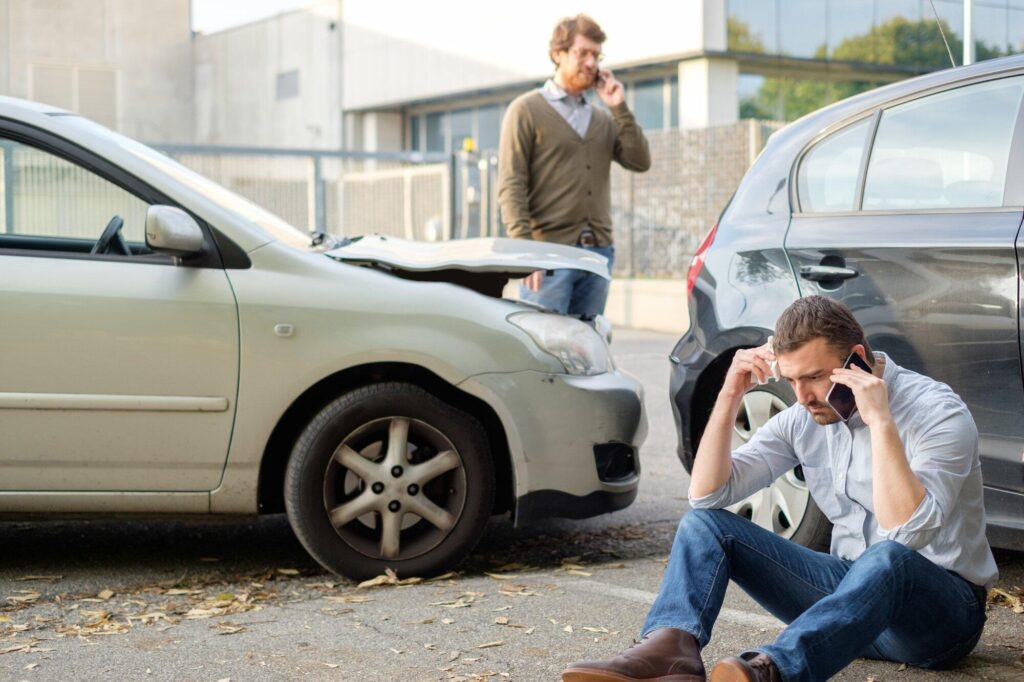We depend on our vehicles to get us where we need to go, but it is easy to take transportation for granted. Every time you get behind the wheel, you face a number of safety risks that could impact yourself, your passengers, and the other drivers around you.
Understanding these risks is key to staying as safe as possible on the road. Collisions occur in Virginia on a daily basis, and many of them are due to preventable causes.
Today, we are taking a look at the most common types of car accidents in this state, the kinds of injuries associated with each, and how an attorney can help if you experience one.
Rear-End Collisions
When motorists fail to leave enough space between the front of their vehicle and the back of the vehicle in front of them, a rear-end collision can occur. This typically happens when the front driver brakes suddenly, leaving the rear driver without enough time or space to brake.
Some of the main reasons why rear-end collisions occur include:
- Driving while impaired
- Driving while drowsy
- Driving while distracted
In most cases, the rear driver is the one at fault. That person is either not paying close enough attention to the car ahead or is following so closely that he or she cannot react in time. However, this is not always the case. The driver in the lead vehicle could be at fault for the collision if he or she stopped or reversed suddenly in active traffic without a valid reason.
Common Injuries
Injuries related to rear-end collisions can range from mild to very serious. Even if both drivers are traveling at low speeds, the sudden impact can create a significant jolt.
On the minor side, soft-tissue injuries like whiplash are common with these types of accidents. On the more severe side, rear-end collisions can lead to broken bones, neck sprains, and spinal cord injuries.
Head-On Collisions
Head-on collisions are some of the most dangerous and devastating types of car accidents that occur in Virginia, or anywhere. While they are not as common as some of the other types of collisions, the aftermath is normally much more serious. These accidents often involve high speed and substantial force, which can lead to life-altering injuries or even death.
There are many different risk factors that could increase a driver’s risk of getting in a head-on collision. Some of the most common ones include:
- Drifting over the center divider or median into oncoming traffic
- Traveling the wrong way on a one-way road
- Driving while intoxicated
- Driving while drowsy or fatigued
- Driving while distracted
- Reckless driving
- Speeding
Common Injuries
Injuries resulting from head-on collisions can be monumental. Both vehicles are usually traveling at full speed directly toward each other, which makes the impact harder than normal. While some drivers only experience whiplash or other minor injuries, others fall victim to a range of catastrophic damages, including:
- Spinal cord damage
- Internal organ damage
- Traumatic brain injury (TBI)
Rollover Accidents
A rollover accident occurs when a car flips over, usually landing on its side or roof. In some cases, the car will make multiple rotations before landing.
These types of accidents normally occur when a car is sideswiped by another vehicle, or clipped on its rear fender. When this happens, it can cause the driver to lose control of the vehicle, preventing the driver from keeping it upright as it leans over from the impact.
Other common causes of rollover accidents include blown-out tires, slippery road conditions, and tread separations.
Common Injuries
Most vehicles crumple to a degree when they roll over, crushing the side panels and caving in the frame. This can throw the driver against the interior of the car, including the doors, dashboard, or interior roof.
While some rollover accidents result in only minor sprains or strains, more serious injuries can also occur. For instance, spinal cord injuries can happen if an occupant’s body is crushed during the rotations, thrown around violently in the vehicle, or subjected to excessive pressure on the torso from the seatbelt. TBIs can also occur as a result of rollover accidents, especially if the rotation and pressure whip the driver’s head around or cause it to knock against the interior. Both of these forces can move the brain back and forth within the skull.
Left-Turn Collisions
When a driver is turning left on a solid green, it is that driver’s responsibility to use a turn signal, yield to oncoming traffic, and only proceed when it is safe to do so. When individuals fail to take these precautions, it can result in a left-turn collision.
Some of the factors that can increase the risk of a left-turn collision include:
- Misjudging the distance or speed of oncoming traffic
- Turning with an obstructed view
- Inadequately surveying the area (e.g. driving into a blind spot)
- Making an illegal maneuver, such as failing to signal or yield
Common Injuries
Injuries commonly associated with left-turn accidents include:
- TBIs
- Neck injuries and whiplash
- Spinal cord injuries
- Lacerations
- Broken bones
Sideswipe Collisions
Side-impact collisions occur when one vehicle strikes another vehicle at a perpendicular angle. Most of the time, the two vehicles make the shape of a “T” when they collide. When this happens, it is also called a T-bone accident.
These accidents are especially dangerous for anyone riding on the side of the vehicle that is struck. While the front and rear ends of a vehicle are specifically designed to be thicker so they can absorb an impact more easily, this is often not the case with the sides.
A few of the top reasons why this kind of accident occurs include:
- Failing to stop at stop signs or other traffic signs/signals
- Failing to stop at an intersection
- Failing to yield the right-of-way to another driver
- Changing lanes without signaling
- Changing lanes without checking mirrors or blind spots
- Driving while distracted or impaired
- Behaving recklessly behind the wheel
Common Injuries
If the side bump is minor or occurs at a low speed, a small amount of property damage might be the only problem. However, a side impact at a high speed (such as on the highway) can cause the impacted driver to lose control of his or her vehicle and spin out. The vehicle may strike other vehicles, pedestrians, or objects such as guardrails or jersey walls.
Some of the most common injuries that can result from a side-impact collision include:
- TBIs
- Head injuries
- Spinal cord injuries
- Back or neck injuries (including whiplash)
- Broken, crushed, or fractured bones
- Internal organ damage
- Chest trauma
Multi-Vehicle Collision
When three or more vehicles are involved in an accident, it is known as a multi-vehicle collision. These events can be catastrophic, leading to a range of different injuries, as well as significant property damage. If five or more vehicles are involved, it may be called a pileup.
Multi-vehicle collisions often occur when a rear-end collision triggers a domino effect. One car fails to stop in time and hits the car in front of it, pushing it into the car ahead, pushing that vehicle into the vehicle ahead of it, and so on.
Common Injuries
Especially on fast-moving highways or interstates, multi-vehicle collisions can result in many kinds of injuries, including the following:
- TBIs and concussions
- Spinal cord injuries
- Neck injuries
- Facial injuries
- Broken bones
- Torn tendons and ligaments
- Internal organ damage
Hit and Run Accidents
A hit-and-run accident occurs when someone is injured in a collision, but the at-fault driver flees the scene before anyone can get the driver’s insurance information or contact information.
Some of the reasons why a person might leave before taking responsibility for his or her actions include:
- Fear of arrest
- Fear of a DUI charge
- Driving without car insurance
- Driving with an outstanding warrant
- Driving with a previous ticket
- Panicking at the moment
Each state has its own legal consequences for drivers who are found guilty of a hit-and-run accident. You can read Virginia’s penalties here.
Seek Legal Help for All Types of Car Accidents
Virginia drivers assume a major responsibility. They must follow the rules of the road and take precautions to keep themselves and their passengers safe. While some accidents are unavoidable, many are due to preventable causes.
These are some of the most common types of car accidents, but there are many other ways a collision can occur. If you are injured in a car accident, you might be entitled to compensation. Our lawyers at Preston, Wilson & Crandley, PLC are skilled in every aspect of car accident law, and we will put your personal injury claim in the best position for success. To learn more, contact us today.


